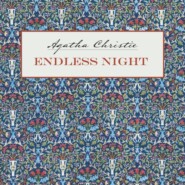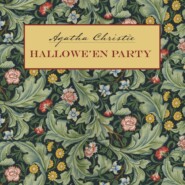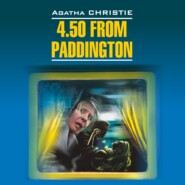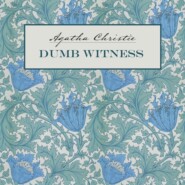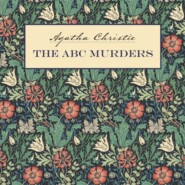По всем вопросам обращайтесь на: info@litportal.ru
(©) 2003-2025.
✖
Agatha Christie’s Complete Secret Notebooks
Настройки чтения
Размер шрифта
Высота строк
Поля
Ronnie West (debonair Peter Wimseyish)
Agatha Christie in the Notebooks
Christie several times references herself and her work in the Notebooks. For some reason she twice – in Notebooks 72 and 39 – lists some of her books, although the lists are not exhaustive nor is it obvious what the titles have in common; and she often refers to earlier titles as a quick reminder.
Analysis of books so far
Hotels – Body in Library, Evil under the Sun
Trains Aeroplanes – Blue Train, Orient Express, Death in Clouds, Nile
Private Life (country) Towards Zero, Hollow, Xmas, 3 Act Tragedy, Sad Cypress
(village) Vicarage, Moving Finger Travel – Appointment with Death
This list appears just after notes for Mrs McGinty’s Dead. The fact that Taken at the Flood does not appear in the list may mean that it was compiled in late 1946, after The Hollow, or early 1947, before Taken at the Flood was completed. From the headings it would seem that she was considering backgrounds previously used.
Ackroyd
Murder on Nile
Death in Clouds
Murder in Mesopotamia
Orient Express
Appointment with Death
Tragedy in 3 Acts
Dead Man’s Mirror
And the above, squeezed into the corner of a page during the plotting of Evil under the Sun, is even more enigmatic. Apart from the fact that they are all Poirot stories, it is difficult to see what they have in common.
The next musing appears in the notes for Towards Zero. Wisely, she decided against it as another mysterious death at the hotel in the space of three years could look, in Oscar Wilde’s famous phrase, like carelessness:
Shall hotel be the same as Evil Under the Sun – N[eville] has to go across in trolley because high water
The following odd, and inaccurate, reference – Poirot was not involved in the case – to an earlier killer appears in the notes for Elephants Can Remember.
Calls on Poirot – asks about Josephine (Crooked House)
This was among the last notes to appear, written just before the publication of Postern of Fate:
Nov. 2nd 1973 Book of Stories The White Horse Stories
First one – The White Horse Party (rather similar to Jane Marple’s Tuesday Night Club)
Chapter 25 of 4.50 from Paddington includes a brief, cryptic reference to A Murder is Announced, but without mentioning the title …
Somebody greedy – bit about Letty Blacklock
… while this reference appears during the plotting of Third Girl:
Poirot worried – old friend (as in McGinty) comes to tea
Finally, the idea of reintroducing Sergeant Fletcher from A Murder is Announced was briefly considered during the plotting of A Pocket Full of Rye:
Chapter II – Crossways – Inspector Harwell – or Murder is Announced young man
I (#ulink_a78ae493-2d2e-5084-8ec9-6faacdd957dc)
The First Decade 1920–1929 (#ulink_a78ae493-2d2e-5084-8ec9-6faacdd957dc)
‘It was while I was working in the dispensary that I first conceived the idea of writing a detective story.’
An Autobiography
SOLUTIONS REVEALED
After the Funeral • Appointment With Death • Death in the Clouds • The Man in the Brown Suit • The Mysterious Affair at Styles • The Mystery of the Blue Train • ‘The Red Signal’ • The Secret of Chimneys
The Mysterious Affair at Styles was published in the USA at the end of 1920 and in the UK on 21 January 1921. It is a classic country-house whodunit, a setting and form destined to become synonymous with the name of Agatha Christie. Ironically, over the following decade she wrote only one more ‘English’ domestic whodunit, The Murder of Roger Ackroyd (1926). The other two whodunits of this decade are set abroad: The Murder on the Links (1923) is set in Deauville, France and The Mystery of the Blue Train (1928) has a similar South of France background. With the exception of the last title, which Christie, according to An Autobiography, ‘always hated’ and had ‘never been proud of’, they are first-class examples of the classic detective story then entering its Golden Age. Each title, with the same exception, displays the gifts that would later make Agatha Christie the Queen of Crime – uncomplicated language briskly telling a cleverly constructed story, easily recognisable and clearly delineated characters, inventive plots with all the necessary clues given to the reader, and an unexpected killer unmasked in the last chapter. These hallmarks would continue to be a feature of Christie’s books until the twilight of her career, half a century later.
The rest of her novels of the 1920s consist of thrillers, both domestic – The Secret Adversary (1922), The Secret of Chimneys (1925) and The Seven Dials Mystery (1929) – and international – The Man in the Brown Suit (1924). While none of these titles are first-rate Christie, they all exhibit some elements that would appear in later titles. The Secret Adversary, the first Tommy and Tuppence adventure, unmasks the least likely suspect while The Man in the Brown Suit is an early experiment with the famous Roger Ackroyd conjuring trick. The Seven Dials Mystery subverts reader expectation of the ‘secret society’ plot device and The Secret of Chimneys, a light-hearted mixture of missing jewels, international intrigue, incriminating letters, blackmail and murder in a high society setting, shows early experimentation with impersonation and false identity.
Throughout the 1920s Christie’s short story output was impressive, with three such collections published in the decade. The contents of Poirot Investigates (1924) first appeared in The Sketch, in a commissioned series of short stories, starting in March 1923 with ‘The Affair at the Victory Ball’. By the end of that year two dozen stories had appeared and 50 years later the remainder of these stories had their first UK book appearance in Poirot’s Early Cases. In 1953 Christie dedicated A Pocket Full of Rye to the editor of The Sketch, ‘Bruce Ingram, who liked and published my first short stories.’ In 1927, at a low point in Christie’s life, after the death of her mother, the end of her marriage, and her own disappearance, The Big Four was published. This episodic Poirot novel, consisting of a series of connected short stories all of which had appeared in The Sketch during 1924, can also be considered a low point in the career of Hercule Poirot as he battles international criminals intent on world domination. The last collection of the decade is the hugely entertaining Partners in Crime (1929). These Tommy and Tuppence adventures, most of which had appeared in The Sketch also during 1924, were pastiches of many of the crime writers of the time – ‘The Man in the Mist’ (G.K. Chesterton), ‘The Case of the Missing Lady’ (Conan Doyle), ‘The Crackler’ (Edgar Wallace) – and, while light-hearted in tone, contain many clever ideas.
Apart from her crime and detective stories, tales of the supernatural, romance and fantasy all appeared under her name in many of the fiction magazines that proliferated. The stories later published in the collections The Mysterious Mr Quin, The Hound of Death and The Listerdale Mystery were written and first published in the 1920s. And, of course, it was during the 1920s that Miss Marple made her first appearance, in the short story ‘The Tuesday Night Club’, published in The Royal Magazine in December 1927. With the exception of the final entry, ‘Death by Drowning’, the stories that appear in The Thirteen Problems were all written in the 1920s and appeared in two batches, December 1927 to May 1928, and December 1929 to May 1930. In 1924 her first poetry collection The Road of Dreams was published. And it seems likely that her own stage adaptation of The Secret of Chimneys was begun in the late 1920s, as was the unpublished and unperformed script of the macabre short story ‘The Last Séance’.
The other important career decision taken in 1924 was to employ the services of a literary agent, Edmund Cork. The first task he undertook was to extricate Christie from her very one-sided contract with The Bodley Head Ltd and negotiate a more favourable arrangement with Collins, the publisher with which she was destined to remain for the rest of her life; as, indeed, she did with Edmund Cork.
Three of the best short stories Christie ever wrote were published during this decade. In January 1925 ‘Traitor Hands’, later to achieve immortality as the play, and subsequent film, Witness for the Prosecution, appeared in Flynn’s Weekly. The much-anthologised ‘Accident’ was published in the Daily Express in 1929; this was later adapted by other hands into the one-act play Tea for Three. And ‘Philomel Cottage’, which inspired a stage play and five screen versions as Love from a Stranger, appeared in The Grand in November 1924.
Finally, the first stage and screen versions of her work appeared during the 1920s. Alibi, adapted for the stage by Michael Morton from The Murder of Roger Ackroyd, opened in May 1928 while the same year saw the opening of films of The Secret Adversary – as Die Abenteuer G.m.b.h. – and The Passing of Mr Quinn [sic], based, almost undetectably, on the short story ‘The Coming of Mr Quin’.
This hugely prolific decade shows Christie gaining an international reputation while experimenting with form and structure within, and outside, the detective genre. Although her first novel was very definitely a detective story, her output for the following nine years returned only twice to the form in which she was eventually to gain immortality.
The Mysterious Affair at Styles (#ulink_df9304be-3a2e-5eb9-b627-f1d8c5e4086a)
21 January 1921
Arthur Hastings goes to Styles Court, the home of his friend John Cavendish, to recuperate during the First World War. He senses tension in the household and this is confirmed when Emily Inglethorp, John’s stepmother, is poisoned. Luckily, a Belgian refugee, one Hercule Poirot, staying nearby is an old friend.
As we saw in Chapter One ‘The Beginning of a Career’ one of the readers’ reports on The Mysterious Affair at Styles mentioned the John Cavendish trial. In the original manuscript, Poirot’s explanation of the crime is given in the form of his evidence in the witness box during the trial. In An Autobiography Christie describes John Lane’s verdict on her manuscript, including his opinion that this courtroom scene did not convince and his request that she amend it. She agreed to a rewrite and although the explanation of the crime itself remains the same, instead of giving it in the course of the judicial process, Poirot holds forth in the drawing room in the kind of scene that was to be replicated in many later books.
Incredibly, a century later – it was written, in all probability, in 1916 – the deleted scene has survived in the pages of Notebook 37, which also contains two brief and somewhat enigmatic notes about the novel. Equally incredible is the illegibility of the handwriting, complicated by numerous deletions and insertions, many squeezed in, sometimes at an angle, above the original. And although the explanation of the crime is, in essence, the same as the published version, the published text was of limited help. The wording is often different and some names have changed. This exercise in transcription was the most challenging of the Notebooks but the fact that it is Agatha Christie’s and Hercule Poirot’s first case made the extra effort worthwhile.












